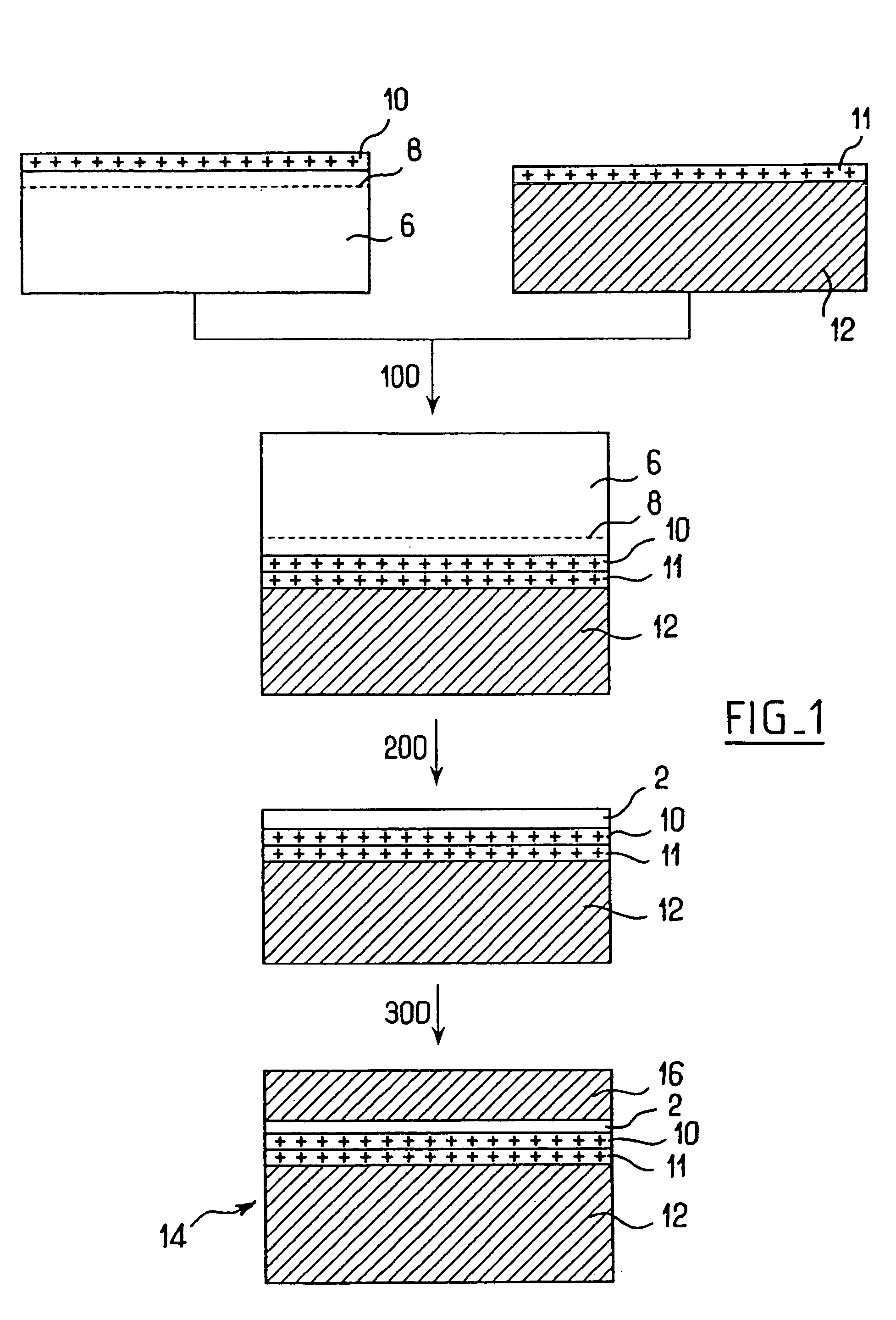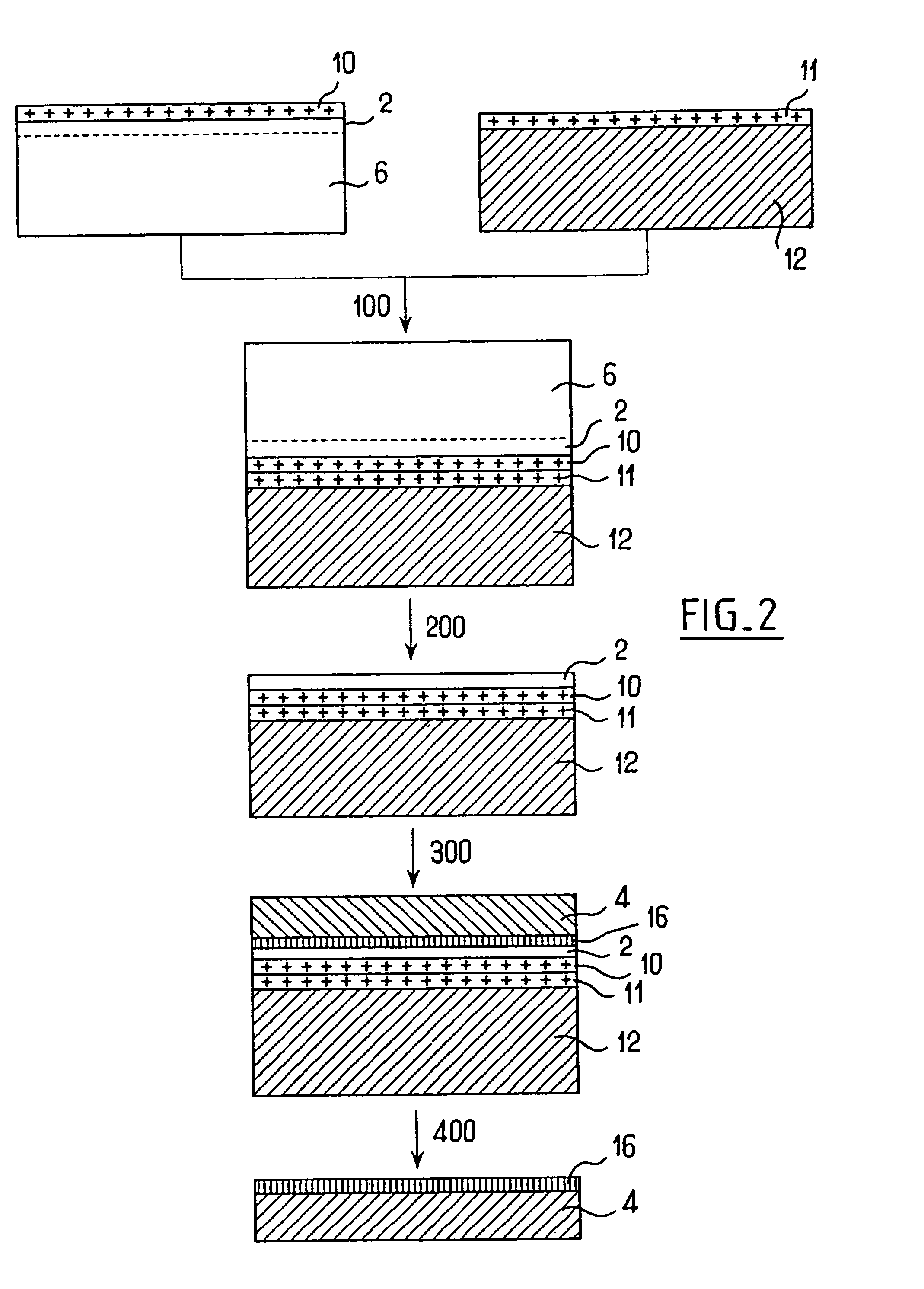Methods for fabricating a substrate
a substrate and method technology, applied in the direction of polycrystalline material growth, crystal growth process, chemically reactive gas, etc., can solve the problems of not being able to obtain or otherwise not available, unable not being able to meet the requirements of a working layer,
- Summary
- Abstract
- Description
- Claims
- Application Information
AI Technical Summary
Benefits of technology
Problems solved by technology
Method used
Image
Examples
example 1
[0050]In the example corresponding to the first row of Table 2, a working layer 16 is made of gallium nitride on a seed layer 2 constituted by monocrystalline silicon carbide, itself on a polycrystalline silicon carbide support 12, with bonding layers 10 and 11 of silicon carbide being interposed between the support 12 and the seed layer 2. By way of example, the seed layer 2 is 1000 Å thick. The support 12 is 300 μm thick, for example.
[0051]The structure comprising a stack of the seed layer 2 of monocrystalline silicon carbide, the two bonding layers 10 and 11 of silicon oxide, and the support 12 of polycrystalline silicon carbide is made by a layer transfer method known to the person skilled in the art (e.g. see an application of the Smart-Cut® method in French patent No FR 2,681,472 or U.S. Pat. No. 5,374,564, each of which is expressly incorporated herein by reference thereto).
[0052]The working layer 16 can be made by chemical vapor deposition (CVD), by high temperature chemical...
example 2
[0054]In this example (second row of above table), a structure is provided that is equivalent to that of Example 1, except that the seed layer 2 of silicon carbide is replaced by a seed layer 2 of {111} silicon.
[0055]The thickness of the {111} silicon is preferably limited to less than 3000 Å so as to enable it to adapt without cracking to the thermal expansion that will take place during the various operations mentioned above.
example 3
[0056]In this example (third row of the above table), a structure is made that is equivalent to that of Examples 1 and 2, except that the seed layer 2 is made of sapphire.
[0057]Sapphire is another material that is known for permitting good epitaxy of gallium nitride.
PUM
| Property | Measurement | Unit |
|---|---|---|
| thickness | aaaaa | aaaaa |
| thickness | aaaaa | aaaaa |
| thickness | aaaaa | aaaaa |
Abstract
Description
Claims
Application Information
 Login to View More
Login to View More - R&D
- Intellectual Property
- Life Sciences
- Materials
- Tech Scout
- Unparalleled Data Quality
- Higher Quality Content
- 60% Fewer Hallucinations
Browse by: Latest US Patents, China's latest patents, Technical Efficacy Thesaurus, Application Domain, Technology Topic, Popular Technical Reports.
© 2025 PatSnap. All rights reserved.Legal|Privacy policy|Modern Slavery Act Transparency Statement|Sitemap|About US| Contact US: help@patsnap.com



